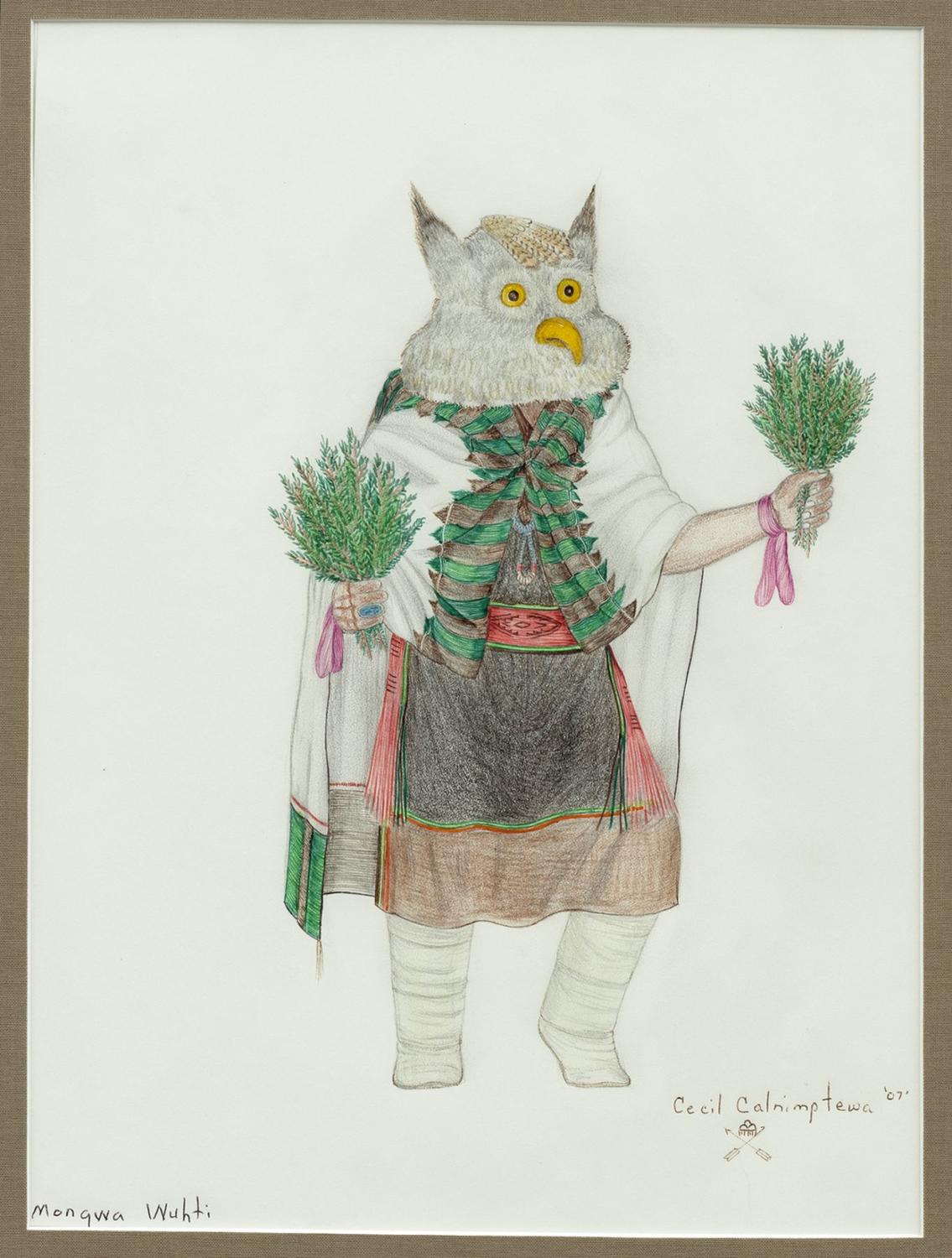Mongwa Wuhti

Cecil Calnimptewa (b. 1950 Moenkopi, Arizona), Mongwa Wuhti, 2007, Colored pencil, Museum purchase, The Nancy Gray Sherrill, Class of 1954, Collection Acquisition Fund 2020.22.3
Best known for his prize-winning carved wood Katsina dolls (tithu), Hopi artist Cecil Calnimptewa learned the traditional art from his father. As a boy, Calnimptewa assisted in the sanding and painting of the tithu his father carved. He now also passes down the tradition and teaches others how to carve tithu. His works are held in many public and private collections, including the Heard Museum in Phoenix, Arizona. Recently, the Davis Museum purchased six drawings of Katsinam (plural, Hopi spirit beings) by the artist, created when he was unable to carve between 2006 and 2009.
In Hopi theology, all things have a spirit, or Katsina. Humans, animals, plants, rocks, and water: everything on earth has a Katsina that can intercede with the deities to grant prayers. The Katsinam stay with the Hopi during the seasonal cycle of ceremonies performed from December through July. Artists like Calnimptewa and his father have carved Katsina dolls, or tithu, from cottonwood to represent the spirits since the 19th century. The Katsinam gift tithu to young girls during the ceremonies, which are later displayed in the home in reverence to the spirits. The Hopi recognize over 400 individual Katsinam, many of which have a standard form of representation when danced in the ceremonies or depicted in art. These drawings are the first works by the artist in the Davis collections and they portray seven different Katsinam: Eototo, the chief Katsina recognized as the “father” of all Katsina, and his lieutenant Aholi; Ahola, a chief Katsina for the Powamu ceremony, and Aholi Mana, a maiden spirit who accompanies him; Mongwa Wuhti, a female great horned owl spirit; Chaveyo, a disciplinary Ogre spirit; and Tatangaya, a hornet spirit.